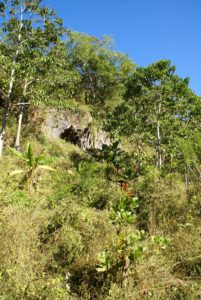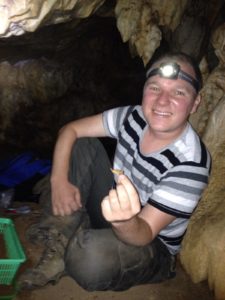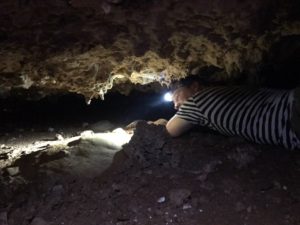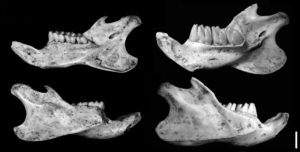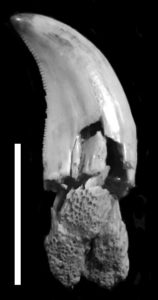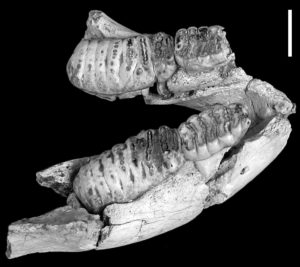Indonesian fossil discovery reveals Wallacean islands were once home to an array of fantastic beasts
- Dr Samuel Turvey looking for fossils in Sumba (C) ZSL
- Dr Samuel Turvey looking for fossils in Sumba (C) ZSL
- Giant Rodent jaws on Sumba – scale bar 5mm
- Komodo dragon tooth found on Sumba – scale bar 1cm
- Stegodon jaw – scale bar 2cm
Press Release – A world of dragons, pygmy elephants and giant rodents may sound like something straight out of the pages of fantasy, but a recent fossil discovery led by scientists from ZSL (Zoological Society of London) indicates this world may have been reality for the islands of the Indonesian archipelago until a few thousand years ago.
Published today (Wednesday 30 August) in Proceedings of the Royal Society B, the study describes the first extensive set of fossils of Pleistocene and Holocene age to be excavated from the Indonesian island of Sumba, which forms part of “Wallacea”, a group of islands that boast unique natural history due to being isolated from the continental shelves of both Asia and Australia.
As well as finding two extinct species of giant rodents – rats the size of cats – the team discovered a tooth from the world’s largest living lizard species, the Komodo dragon (Varanus komodoensis), which is not found on Sumba today.
Other exciting fossil finds included the jaw bones of a tiny elephant-like creature – a pygmy stegodon – which may represent the smallest of this group ever discovered.
Similar extinct species have previously been found on the nearby island of Flores, 50 km to the north, suggesting that this strange array of weird and wonderful creatures may have once been widespread across the islands of Wallacea. The fossil record of Flores also contains the famous “hobbit”, an extinct species of tiny human (Homo floresiensis) described in 2004, and the team suspects that Sumba might have also been home to a species of extinct human that is yet to be discovered.
Lead author Dr Samuel Turvey of ZSL’s Institute of Zoology, said: “These discoveries offer a fascinating and poignant glimpse at a lost world, as many of the animals that evolved in isolation on islands in Wallacea were lost following the prehistoric arrival of modern humans.
“Understanding the past diversity of these islands can give a unique insight into the processes of evolution, explaining why some species were lost while others survived, and shedding new light on how many island ecosystems may have been shaped by human activity.
“It’s unknown at present exactly how the extinct species we’ve found on Sumba are related to similar fossils found on Flores and other islands. It’s possible that some species dispersed over the narrow sea barriers between islands, but they may also have evolved independently into similar forms, due to the similarity of the islands’ ecology and terrain.
“In either case, it’s highly likely that similarly extraordinary species also once existed across the other islands in this region, and we strongly encourage further study on Sumba, as there may be more secrets lurking undiscovered in its fossil history.”
The islands of Wallacea were named in honour of naturalist Alfred Russel Wallace, who first noted the unusual distributions of animal species across the region in the 19th century. His conclusions led to the naming of Wallace’s Line, the biogeographic “boundary” between Asian and Australian wildlife species.
To find out more about the work of the ZSL Institute of Zoology, visit www.zsl.org/science

